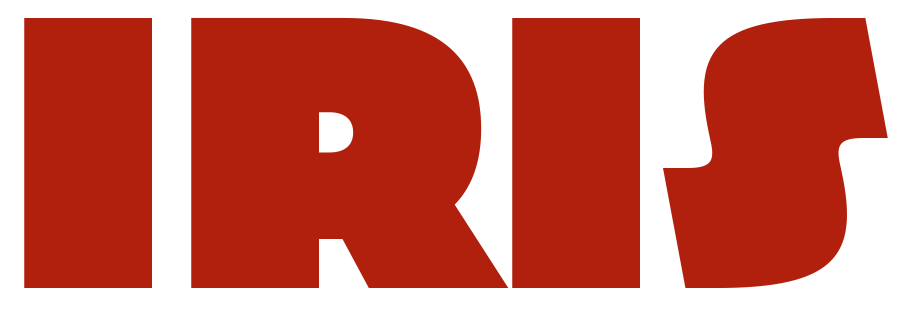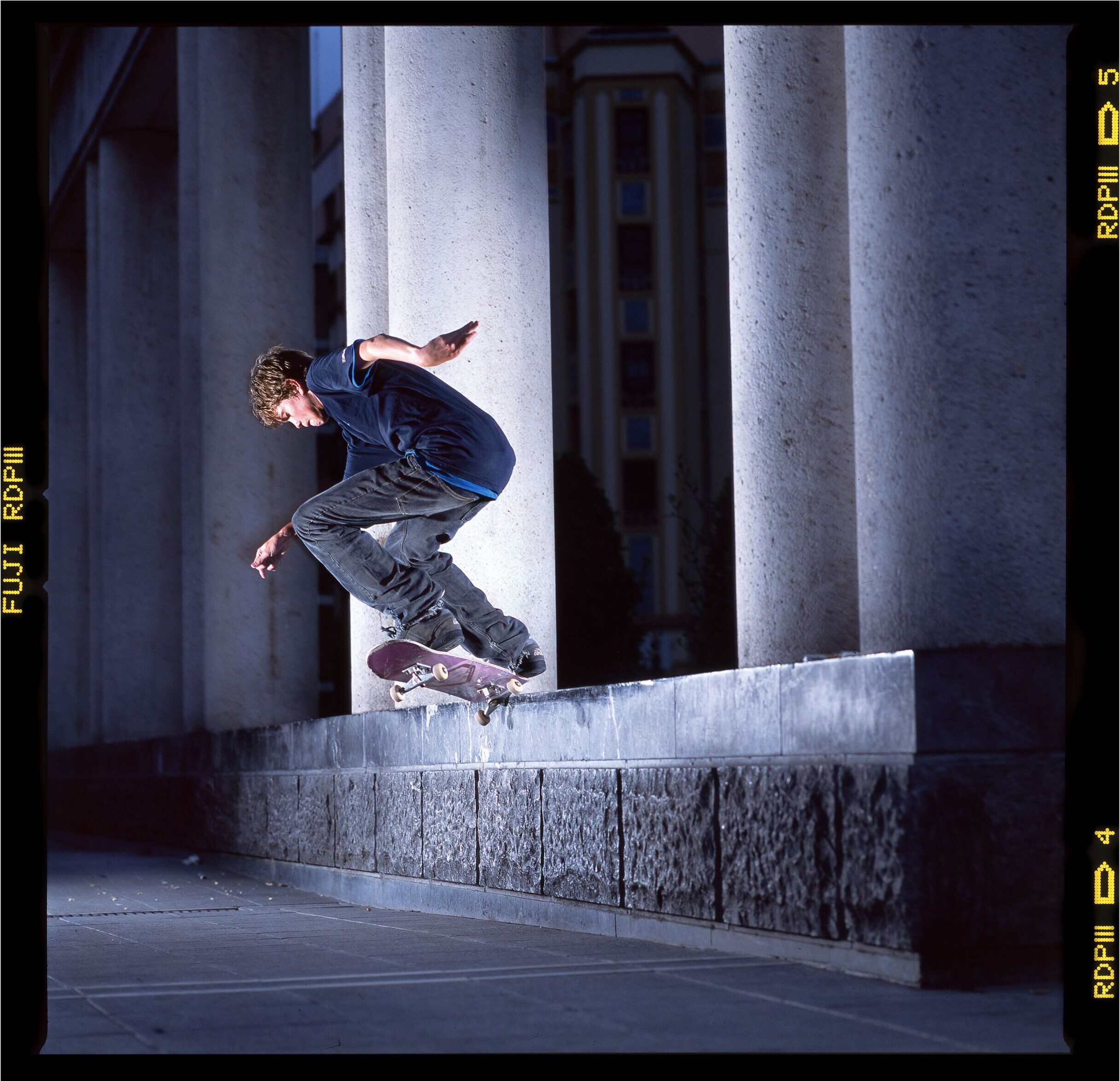Leo Sharp is a pioneering photographer who has seen the evolution of skateboarding since its boom in the late 80s. Also a lecturer at Falmouth University, he is now passing on his photography skills and experiences to the next generation. As the photo editor and co-founder of The Skateboarder’s Companion approached his 50th birthday, he reflects on his career and experiences within the industry.
Escaping “Jock Sport”
At 11 years old, Leo got his first skateboard, a skinny plastic toy from the local indoor market: “I don’t know how we fit our knees on those tiny, five-inch-wide boards. We all used to go down and pile into the grass cuttings at the bottom of the hill.
“It became clear that I wasn’t that great at football and didn’t enjoy it. So I gravitated towards skating. It didn’t seem like there was any competitiveness in it. You did it, had fun, learned tricks, and that was sort of it.”
After a couple of years and a growing enthusiasm, Leo got his first professional skateboard.
“It was a Santa Cruz, Rob Roskopp with independent trucks and bullet wheels. Everything was colour coordinated.”
Skateboarding Hub in Milton Keynes was only 20 minutes down the road, and he began to venture there, meet new people, and embed himself into the scene.
“Skateboarding is really social, it helped me spread my wings, and the photography came slightly later. I was lucky that I had my subject matter before I really got into photography. I was interested in documenting my friends, learning to skateboard, doing tricks, and getting better at it.
“I was photographing the culture and the fashion aspect of it, but didn’t even realize it. You see the cyclic nature of the fashion evolving, from tight jeans back to baggy jeans, to slip-on shoes back to bigger shoes.”
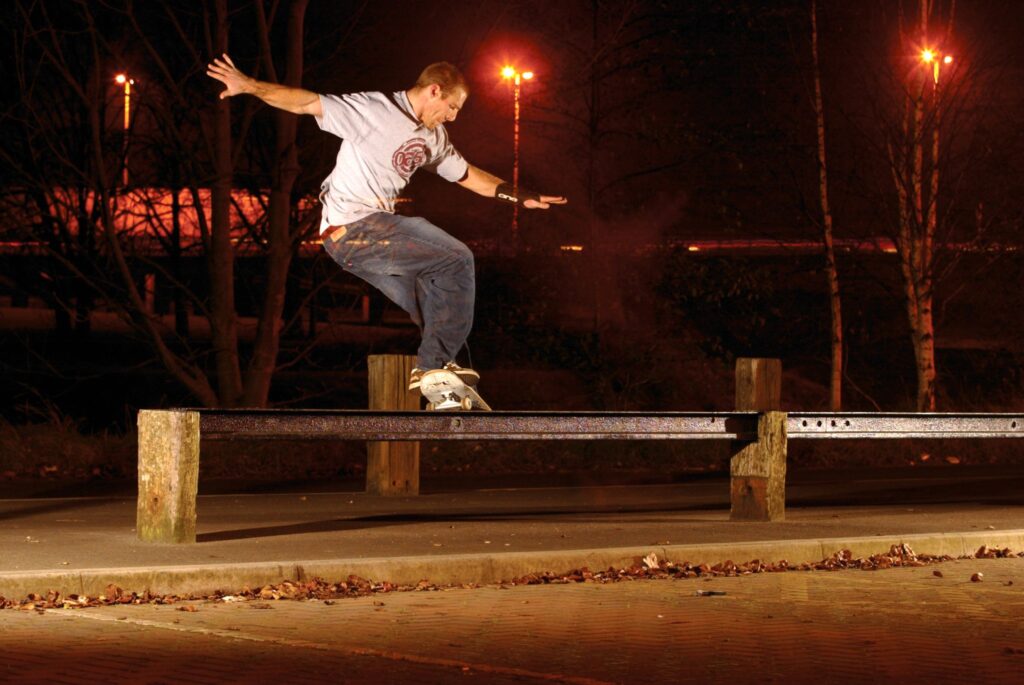
Mentored & Printed
RAD Magazine (Read and Destroy), run by Tim Leighton-Boyse, was Leo’s first step into the world of published skateboarding photography: “RAD was seen as the Bible for us. I remember getting my first semi-professional camera in 1991. It was a Minolta x300s, and that summer, I grabbed a couple of rolls of film and shot pictures of my friends skateboarding in Milton Keynes. I was set up to write, and RAD published a three-page article.”
While RAD gave him the platform, it was the guidance of Matthew “Wig” Worland that elevated Mr Sharp’s photography skills: “He was a couple of years older than me and had a better camera and a fish eye lens, which was the lens that you lusted after to take great looking wide angle photos. I was too young and didn’t have the money for that. He took me under his wing and used the local council-run darkroom to show me how to print black and white pictures.”
A trip to America allowed Leo to visit his dream spot: “I went to the Embarcadero Centre in San Francisco in 1997, then hubba hideout, which were the iconic ledges down the stairs around the corner. There’s something about that place. My girlfriend and I got the Greyhound bus across America and arrived in San Francisco at 6 am. All I wanted to do was visit the spot.
“We searched downtown for an hour until we found it, and it’s one of those places you’ve seen in so many skateboard videos. It’s almost like it doesn’t exist until you’ve been there because it’s a mythical place that you’ve only ever seen on a TV screen.”
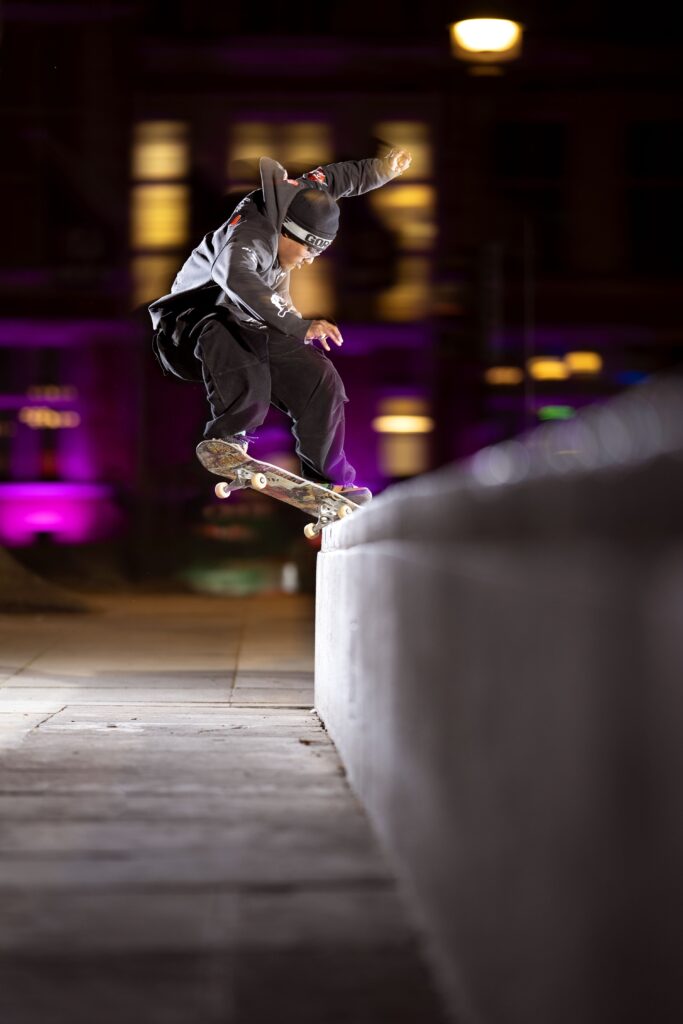
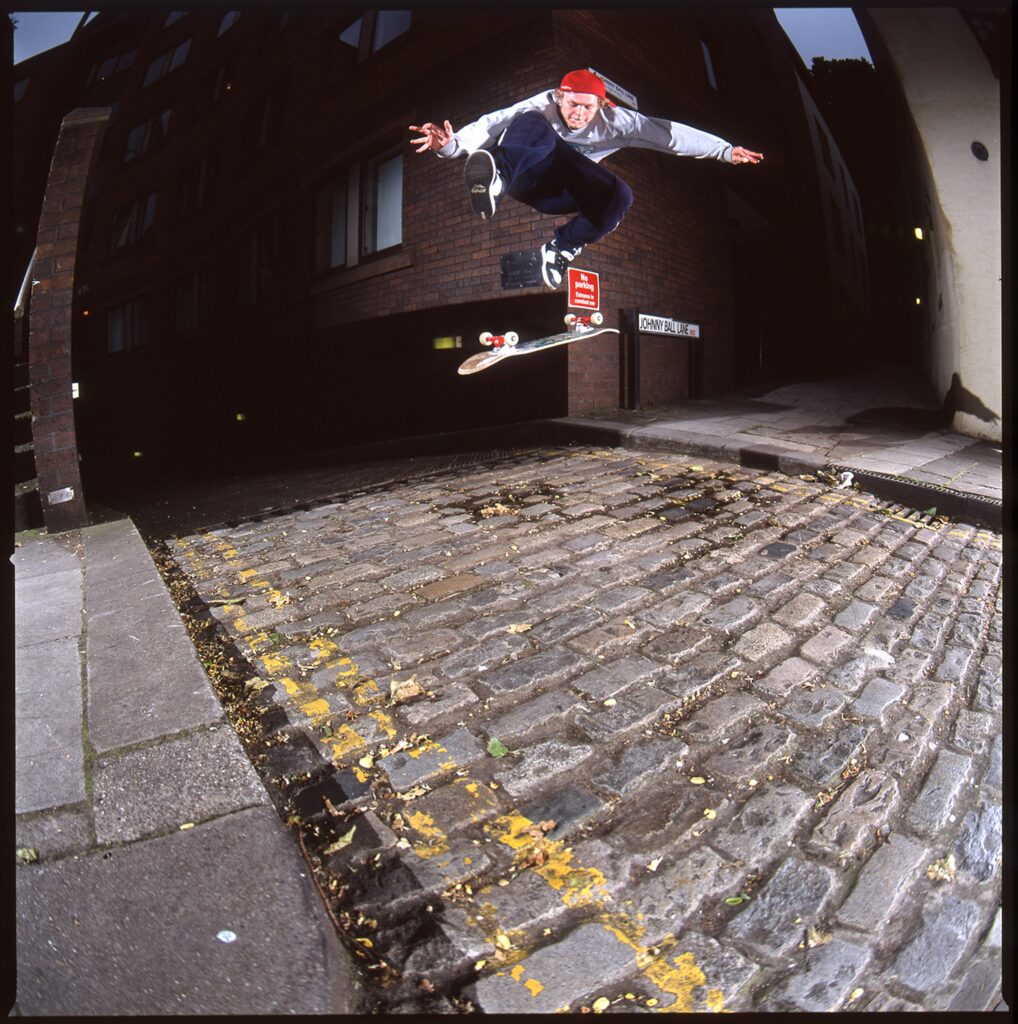
Tips on the Equipment
Leo’s role as photo editor of the Skateboarder’s Companion and his experience documenting skateboarding over the years have given him an exemplary understanding of approaching filming and interviews.
“We’re really conscious of keeping things diverse at the Skateboarder’s Companion. Years ago, when I started, it was almost exclusively white males doing it, but these days there’s such a rich diversity, with people of colour and lots of girls doing it too.
“It’s not just about how good you are on a skateboard. It’s about what you contribute to the culture, and if you’re an interesting person.”
Since beginning his career, the equipment has evolved, starting with a Canon T90, moving to Hasselblad, back to Canon, and now shooting on Sony.
“A good camera set up for beginners would be an entry-level digital body, DSLR or mirrorless, and a 50mm prime lens. Canon, Nikon, Sony, and Fuji are all good brands. I currently use a Sony A7 IV mirrorless camera.”
Specifically in skateboarding, he also highlighted where best to spend your money to enhance the professionalism of your photography.
“The main thing for shooting good case doubles, that will set you apart a little bit, is lighting. You can buy much cheaper off-camera lighting now. I use a company called Godox. The AD200 is a really good light to get, that will transform your stills photography. You can still take nice compositions and think about where you’re positioning the skateboarder in the frame with available light, but when you start using off-camera lighting, it can completely transform the look of it.”
Three decades in, Leo Sharp remains dedicated to documenting the scene, passing on his knowledge, and capturing skateboarding as more than a sport but as a culture, a community, and a way of life.
